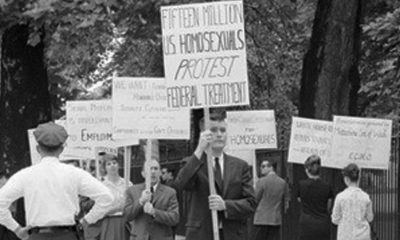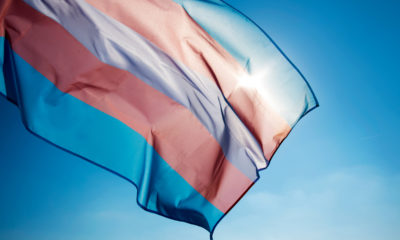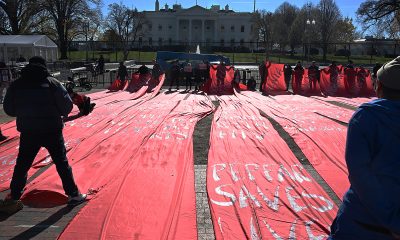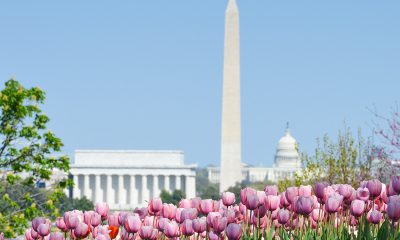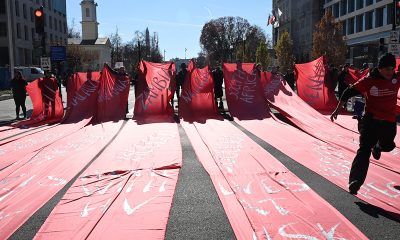Federal Government
Rachel Levine and AVP on approaching anti-LGBTQ hate as ‘public health threat’
White House LGBTQI+ Safety Partnership ‘ramping up’
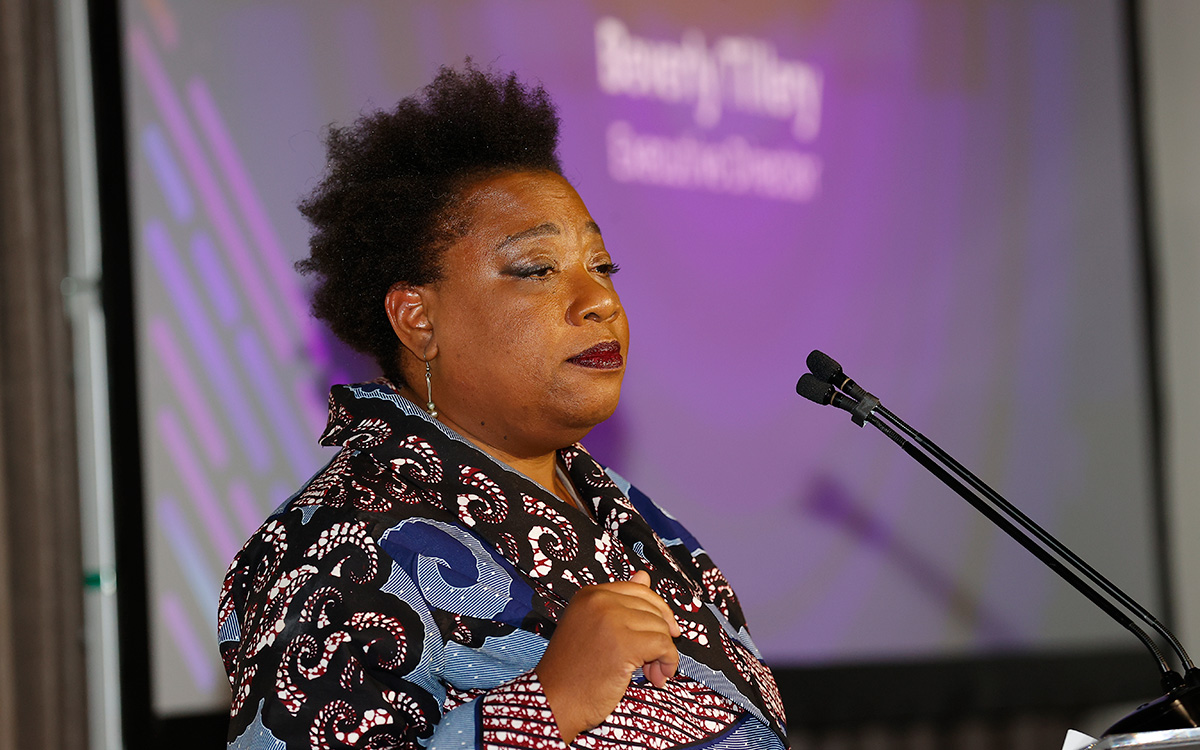
Admiral Rachel Levine, assistant secretary for health at the U.S. Department of Health and Human Services, told the Washington Blade in a statement: “We know that hate — whether fueled by homophobia, transphobia, or racism — is a public health threat.”
“I look forward to a day in the future where hate-fueled violence, is an unwelcome memory of the past and no longer incites fear amongst LGBTQI+ people, and all people who live in America,” she said, adding, “We all deserve to live in communities safe from violence.”
A pediatrician and four-star officer who serves as the highest-ranking openly transgender official in U.S. history, Levine’s statement came in response to an inquiry about her meeting on Thursday with New York City Anti-Violence Project (AVP) Executive Director Beverly Tillery.
Also in attendance were the assistant secretary’s senior adviser on LGBTQI+ health equity, Adrian Shanker, and Lynn Rosenthal, director of Sexual and Gender-based Violence at the agency.
“We talked about some of the recommendations we have developed specifically for HHS,” Tillery told the Blade during a phone interview on Friday.
These focused on three areas, she said: “more work that will approach hate violence as a public health issue”; incorporating this approach and addressing “the needs of safe spaces on the ground” when implementing the White House LGBTQI+ Community Safety Partnership; and exploring “opportunities for funding and technical assistance for safe spaces.”
Tillery said that “it was a real honor to be able to have a conversation directly with” Levine, adding that during their meeting, the assistant secretary explained she had made a point of visiting LGBTQ spaces in person.
HHS understands that these groups provide and administer the services it funds, like legal aid and referrals to affirming healthcare providers, she said.
The agency “prioritizes those spaces,” with the knowledge that “we’re talking about a really critical infrastructure in our community,” a network of organizations that “holds our community together in terms of physical and mental health,” Tillery said.
Noting the escalation of violence encountered by LGBTQ individuals and spaces, the White House in June announced plans to create an LGBTQI+ Community Safety Partnership led by the U.S. Department of Homeland Security in coordination with the U.S. Department of Justice and HHS.
“We are now looking to the beginning of next year, kind of having a plan in place for what we think needs to be happening for next Pride season, really early, and also thinking about the election,” Tillery said. “This is a really critical time where we need to make sure that we get as much information and resources and boots on the ground so they can be actively thinking about safety in a bunch of different ways.”
The White House explained the Partnership will “Provide dedicated safety trainings for LGBTQI+ community organizations and increase federal threat briefings for LGBTQI+ organizations,” “protect health care providers who serve the LGBTQI+ community,” and “support LGBTQI+ communities to report hate crimes and build cross-community partnerships to address hate-fueled violence” — all while working “to build trust between LGBTQI+ organizations and federal law enforcement agencies.”
So far, Tillery said, “the bulk of the work right now that has been done rests in” the Department of Homeland Security, but “I do feel like, right now, they’re ramping up and figuring out [questions like] ‘who is going to be responsible for this thing and what is it going to look like?'”
She added that during Thursday’s meeting, “One of the things that we asked HHS to think about and help us think about is, ‘could there be some very public, regular cadence of meetings between organizations and the agencies specifically about this Partnership'” such that the public might be kept apprised of its progress?
“We are really hoping,” Tillery said, “to make sure that there’s a process for AVP and other organizations to be in regular communication with [the agencies] involved in the White House Community Safety Partnership.”
Tillery said she also talked with Levine and the other officials about ways that HHS, which unlike DHS and DOJ does not represent law enforcement, can contribute — such as by “having them play a role in data collection,” especially provided how the agency is already “paying attention to” data on sexual orientation and gender identity “across the board” and is well positioned to identify gaps.
The full spectrum of hate incidents targeting all types and sizes of LGBTQ spaces
For the past few months, Tillery has met with the White House, HHS, and members of Congress to discuss the first of its kind survey conducted by AVP and its corresponding report published in July, “Under Attack: 2022 LGBTQ+ Safe Spaces National Needs Assessment.”
The document contains feedback from LGBTQ groups of all types and sizes from all 50 states on the hate incidents they have experienced and “the critical needs they have for future safety.”
AVP discovered that nearly nine in 10 LGBTQ community centers experienced hate incidents in person or over the phone. The findings are consistent with the increase, from 2021 to 2022, in hate crimes motivated by bias against the victim’s sexual orientation and, especially, gender identity that were reported by the FBI on Oct. 16.
What distinguishes AVP’s report, Tillery told the Blade during a previous interview on Sept. 13, is that “nobody had really looked at this issue of what’s exactly happening with [LGBTQ] spaces across the country.”
She noted the importance of broadening the focus on anti-LGBTQ hate incidents to include not just acts of violence like last year’s the mass shooting at Club Q, but the full range of ways in which LGBTQ people are targeted or made to feel unsafe, and in all types of community spaces from book stores to bars and beyond.
When discussing the report and its findings in meetings on Capitol Hill, Tillery said “people are surprised” to learn the extent of anti-LGBTQ violence as well as “the range of different kinds of incidents that are happening across the country” and “the way these attacks are happening.”
About half of the surveyed LGBTQ groups said they did not report hate incidents to the police, with many respondents explaining that when their spaces were targeted with anti-LGBTQ protests led by white nationalist groups like the Proud Boys, they felt local law enforcement was more closely allied with or sympathetic to the extremists, Tillery said.
She noted the “overlay of gun violence with this as well,” especially in communities that do not have strong gun safety laws; places where, in many cases, anti-LGBTQ protesters showed up heavily armed.
Understanding intimate partner violence within the LGBTQ community
Tillery said she was encouraged by how much of her conversation with Levine, Shanker, and Rosenthal concerned issues of intimate partner violence within the LGBTQ community within the context of anti-LGBTQ violence more broadly.
She explained that victims are often made vulnerable by their sexual orientation, gender identity, or HIV status, and targeted not just with physical violence but also other forms of intimate partner abuse such as forced “outing,” blocking access to medication, or isolation from community and support networks.
The problem was exacerbated by the Covid pandemic, Tillery said, which caused many people to be “stuck at home with people who might be causing them harm.” Likewise, she said, LGBTQ youth who do not live in affirming, supportive homes in many cases “had to relive some of the homophobia and transphobia while they were in isolation with family members.”
The conversation about intimate partner violence dovetailed into other matters Tillery discussed with HHS, such as areas in which there is a deficit in data collection, she said.
For example, she pointed to the results of the Centers for Disease Control and Prevention’s 2021 Youth Risk Behavior Survey that were published in April, which had “great data” about experiences with intimate partner violence among gay and bisexual men and women but very little with respect to transgender and gender nonconforming respondents, Tillery said.
Tillery added that strong data is crucial for the Partnership’s work and beyond, carrying implications “down the road for funding and resources and congressional action.”
Looking ahead to prepare for next year’s Pride and election seasons
Another topic addressed on Thursday, Tillery said, was how best to “get out in front” with the work that must be done on matters of community safety and securing LGBTQ spaces ahead of not just the next Pride season but also the 2024 elections.
She said AVP will continue working with the Biden-Harris administration and other partners on implementing measures to protect the various groups, activists, organizers, and volunteers who will be running voter registration programs, participating in “get out the vote” efforts, and campaigning on behalf of candidates.
“We are now looking to the beginning of next year, kind of having a plan in place for what we think needs to be happening for next Pride season, really early, and also thinking about the election,” Tillery said.
“This is a really critical time where we need to make sure that we get as much information and resources and boots on the ground so they can be actively thinking about safety in a bunch of different ways,” she said.
Tillery added, “Hopefully we can get out in front of it, so that we can provide some groups with some resources and tools before they start doing a lot of those activities as the election season heats up,” she said.
Federal Government
HHS ‘peer-reviewed’ report calls gender-affirming care for trans youth dangerous
Advocates denounce document as ‘sham science’

The U.S. Department of Health and Human Services on Nov. 19 released what it called an updated “peer reviewed” version of an earlier report claiming scientific evidence shows that gender-affirming care or treatment for juveniles that attempts to change their gender is harmful and presents a danger to “vulnerable children.”
“The report, released through the Office of the Assistant Secretary of Health, finds that the harms from sex-rejecting procedures — including puberty blockers, cross-sex hormones, and surgical operations — are significant, long term, and too often ignored or inadequately tracked,” according to a statement released by HHS announcing the release of the report.
“The American Medical Association and the American Academy of Pediatrics peddled the lie that chemical and surgical sex-rejecting procedures could be good for children,” said HHS Secretary Robert F. Kennedy Jr. in the HHS statement, “They betrayed their oath to first do no harm, and their so-called ‘gender affirming care’ has inflicted lasting physical and psychological damage on vulnerable young people,” Kennedy says in the statement.
The national LGBTQ advocacy organizations Human Rights Campaign and GLAAD issued statements on the same day the HHS report was released, denouncing it as a sham based on fake science and politics.
HRC called the report “a politically motivated document filled with outright lies and misinformation.”
In its own statement released on the same day the HHS report was released, HRC said HHS’s so-called peer reviewed report is similar to an earlier HHS report released in May that had a “predetermined outcome dictated by grossly uninformed political actors that have deliberately mischaracterized health care for transgender youth despite the uniform, science backed conclusion of the American medical and mental health experts to the contrary.”
The HRC statement adds, “Trans people’s health care is delivered in age-appropriate, evidence-based ways, and decisions to provide care are made in consultation with doctors and parents, just like health care for all other people.”
In a separate statement, GLAAD CEO Sarah Kate Ellis called the HHS report a form of “discredited junk science.” She added the report makes claims that are “grossly misleading and in direct contrast to the recommendations of every leading health authority in the world … This report amounts to nothing more than forcing the same discredited idea of conversion therapy that ripped families apart and harmed gay, lesbian, and bisexual young people for decades.”
In its statement announcing the release of its report, HHS insists its own experts rather than those cited by its critics are the ones invoking true science.
“Before submitting its report for peer review, HHS commissioned the most comprehensive study to date of the scientific evidence and clinical practices surrounding the treatment of children and adolescents for ‘gender dysphoria,’” the statement continues. “The authors were drawn from disciplines and professional backgrounds spanning medicine, bioethics, psychology, and philosophy.”
In a concluding comment in the HHS statement, Assistant Secretary for Health Brian Christine says, “Our report is an urgent wake-up call to doctors and parents about the clear dangers of trying to turn girls into boys and vice versa.”

President Donald Trump on Wednesday signed a bill that reopens the federal government.
Six Democrats — U.S. Reps. Jared Golden (D-Maine), Marie Gluesenkamp Perez (D-Wash.), Adam Gray (D-Calif.), Don Davis (D-N.C.), Henry Cuellar (D-Texas), and Tom Suozzi (D-N.Y.) — voted for the funding bill that passed in the U.S. House of Representatives. Two Republicans — Thomas Massie (R-Ky.) and Greg Steube (R-Fla.) — opposed it.
The 43-day shutdown is over after eight Democratic senators gave in to Republicans’ push to roll back parts of the Affordable Care Act. According to CNBC, the average ACA recipient could see premiums more than double in 2026, and about one in 10 enrollees could lose a premium tax credit altogether.
These eight senators — U.S. Sens. Catherine Cortez Masto (D-Nev.), Dick Durbin (D-Ill.), John Fetterman (D-Pa.), Maggie Hassan (D-N.H.), Tim Kaine (D-Va.), Angus King (I-Maine), Jacky Rosen (D-Nev.), and Jeanne Shaheen (D-N.H.) — sided with Republicans to pass legislation reopening the government for a set number of days. They emphasized that their primary goal was to reopen the government, with discussions about ACA tax credits to continue afterward.
None of the senators who supported the deal are up for reelection.
King said on Sunday night that the Senate deal represents “a victory” because it gives Democrats “an opportunity” to extend ACA tax credits, now that Senate Republican leaders have agreed to hold a vote on the issue in December. (The House has not made any similar commitment.)
The government’s reopening also brought a win for Democrats’ other priorities: Arizona Congresswoman Adelita Grijalva was sworn in after a record-breaking delay in swearing in, eventually becoming the 218th signer of a discharge petition to release the Epstein files.
This story is being updated as more information becomes available.
Federal Government
41 days and counting: Arizona’s Adelita Grijalva says ‘this has gone way too far’
Representative Adelita Grijalva sits down with the Blade to discuss the Epstein files, transgender rights, and her fight to represent Arizona.
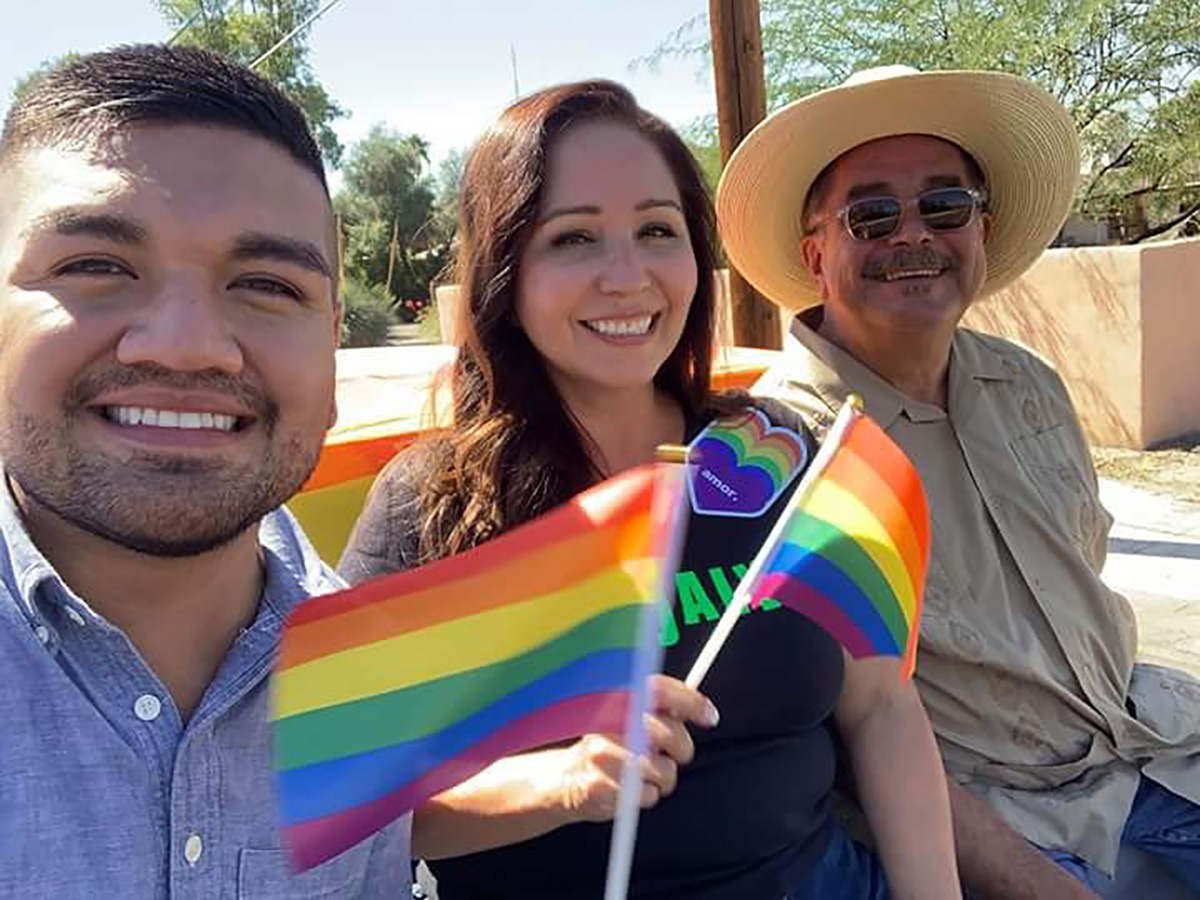
Adelita Grijalva, the recently elected representative from Arizona’s Seventh Congressional District, has already begun making history—without having stepped foot into the Capitol. Grijalva is now officially the longest-delayed member of the House to be sworn in—41 days and counting.
She was elected in a special election on Sept. 23 by a two-to-one margin over her Republican opponent, following the death of her father, Raúl Grijalva, who had represented the district from 2003 until early 2025. The district includes a large portion of Arizona’s southern border with Mexico.
Despite being elected more than 40 days ago, Grijalva has not been given the opportunity to begin her work representing Arizona in the House of Representatives.
Mike Johnson, the Speaker of the House and a representative from Louisiana, has offered several explanations for the delay in swearing in Grijalva—ranging from waiting until all votes were certified in the special election (despite not requiring Republicans who also won special elections to wait) to claiming the House needed to return from recess (despite precedent showing new members are typically sworn in the day after their election, regardless of whether the House is in session). Most recently, Johnson has said Grijalva will not be sworn in until the government reopens.
The Washington Blade sat down with Grijalva to discuss the historic delay in her swearing-in, the importance of protecting transgender rights, book bans, environmental issues, and much more.
While Speaker Johnson has given many explanations for the delay, Grijalva said one stands out above the rest—the Epstein files. She ran on a promise to sign a discharge petition to force a vote for the release of the complete Epstein files, a hypothesized document containing the names of high-profile clients to whom the American financier and convicted child sex offender Jeffrey Epstein trafficked young girls. Her signature on the petition would be the 218th, the minimum number required to force a vote.
“I’ve now broken all the records for speaker obstruction. Nobody else has ever had to wait this long just to represent their constituents… I never received one communication directly from his office,” Grijalva said of Speaker Johnson’s lack of reasoning for the delay. “It seems to me they’re doing everything they can to stop the release of the Epstein files, and I just don’t know what else it could be.”
She added that Johnson’s obstruction isn’t just about her—it’s about the people she was elected to serve.
“We have 812,000 people here in Congressional District 7, and my problem is there’s so much we can’t do,” she said. “So when Speaker Johnson has little side comments to say about what I should and shouldn’t be doing, it’s like—why don’t you do your job so I can do mine?”
For Grijalva, the issue isn’t partisan—it’s about principle. “It shouldn’t matter my party. I won my election fairly and legally, and there’s no reason why my voters should be punished because the Speaker doesn’t like what I stand for,” she said.
She also pointed out the irony that her call for transparency on the Epstein files mirrors one made by Donald Trump himself during his presidential campaign.
“Trump ran on day one, ‘I’m going to release those files,’ and I think he got into office, saw what was in them, and said, ‘Maybe we wait on that,’” she explained. “That’s what I feel is happening now—they’re trying to delay and distract from something that’s going to make a lot of powerful people look bad.”
Still, Grijalva said not all Republicans support Johnson’s decision to keep her from being sworn in. “A couple Republicans have said, ‘Yeah, she should be sworn in. This is crazy.’ I appreciate that—it shouldn’t matter my party. I should be sworn in, period. I think some people on their side know this has gone way too far.”
As the government shutdown drags on, Grijalva said the consequences of congressional inaction are becoming increasingly dire for ordinary Americans.
“Who’s really suffering are the federal workers—people on federal grants, SNAP benefits—who don’t know when they’ll get their next paycheck or how they’ll feed their families,” she said. “These are real-life consequences while they play political games.”
Her frustration over the Epstein files remains steadfast. Grijalva said accountability and transparency must come before politics.
“I don’t care who’s implicated. I don’t care what party they are. If you committed a crime—if you raped children and women—you deserve legal consequences. Survivors deserve transparency and justice so they can begin healing.”
Beyond political accountability, Grijalva also emphasized the urgent need to address environmental degradation—a crisis that hits especially close to home.
“Trump doesn’t care about our environment. If there’s a dollar to be made, he’s going to do it, and he’s not thinking about the long-term consequences for people who actually have to live with the damage,” she said.
The Trump-Vance administration has rolled back a slew of Biden-era environmental policies, from pulling the U.S. out of the Paris Climate Accords to weakening pollution standards and expanding drilling for fossil fuels. For Grijalva, these choices have real, human consequences.
“My dad lived in a Superfund site and drank poisoned water for 15 years. Cancer is now part of our family because of that. These policies aren’t abstract—they hurt real people.”
Her father, the late Raúl Grijalva, passed away from lung cancer earlier this year. The Environmental Working Group estimates that between 100,000 and 122,000 cancer cases in the U.S. may stem from contaminated water—something Grijalva said her family understand all too well.
She also pointed out how allowing environmental destruction by repealing laws meant to protect natural resources threatens Arizona’s economy and identity.
“Arizona is an ecotourism hotspot—there are thousands of jobs tied to protecting our lands. When you destroy it, you can’t put it back together,” she said. “The mining laws are so old that we don’t even get any proceeds for years. It’s like someone digging in your backyard, taking your gold, and then telling you to buy it back later.”
“When people say environmental protection isn’t a priority, I just think of my dad and of our state,” she added. “You don’t gamble with people’s health for a quick profit.”
Shifting to social issues, Grijalva spoke at length about protecting transgender rights during a time when many—particularly on the right—continue to villainize the community.
“Trans rights are human rights. That’s it,” she said firmly. “When I say I’ll speak up for those who don’t feel they have a voice, I mean everybody—especially people who’ve been pushed to the margins.”
She didn’t shy away from calling out members of her own party who, in her view, haven’t done enough. “It’s disappointing that some Democrats are willing to stay silent as a whole community is being attacked,” she said. “Maybe they’ve never known what it’s like to be targeted, but once you have, you stand up for those who need more support.”
“I believe gender-affirming care is life-saving care,” she continued. “We have to push back against these anti-LGBTQ laws and fight for the Equality Act because the federal government has a responsibility to protect people, not erase them.”
“It’s not the government’s business who you love or who you are,” she added. “You should have the autonomy to be whoever you want to be—that is America.”
The congresswoman also spoke passionately about the growing movement to ban books and target libraries—something she called “deeply personal.”
“I’m not only the wife—I’m the daughter and sister of librarians,” Grijalva said with a laugh. “So if I’m not an advocate for our libraries, I’m in a lot of trouble. There should not be banned books. Those stories are a lifeline for students who don’t have support at home.”
She recalled a conversation that underscored her frustration with the movement. “A woman once showed me a book and said, ‘Do you think this should be available to children?’ I said, ‘Are the pictures anatomically inaccurate? Because if they’re correct, why do you care?’ We shouldn’t be policing truth or reality just because it makes some adults uncomfortable.”
Public service, for Grijalva, has always been personal. She was the youngest woman ever elected to the Tucson Unified School District Governing Board in 2002 and served in that role for 20 years—making her one of the longest-serving board members in history.
“I’ve been in elected office for 22 years,” she reflected. “People from high school tell me I’m the same person—and that’s what I want. You don’t let the environment change you; you change the environment.”
“I always have to look my kids in the eye at the end of the day,” she added. “If I have to explain a vote too much, then it’s wrong. That’s the standard I hold myself to.”
Even amid the uncertainty of her delayed swearing-in, Grijalva said she remains focused on the people she was elected to serve.
“The privilege of being able to speak for 812,000 people—it’s overwhelming, but it’s such an honor,” she said. “I’m excited to get sworn in and finally start doing the work my community sent me to do.”
-

 India4 days ago
India4 days agoIndia’s Jharkhand state works to improve trans people’s access to health care
-

 Commentary4 days ago
Commentary4 days agoPerfection is a lie and vulnerability is the new strength
-

 District of Columbia2 days ago
District of Columbia2 days agoHIV/AIDS activists block intersection near White House
-

 Movies3 days ago
Movies3 days agoHoliday movie season off to a ‘Wicked’ good start

